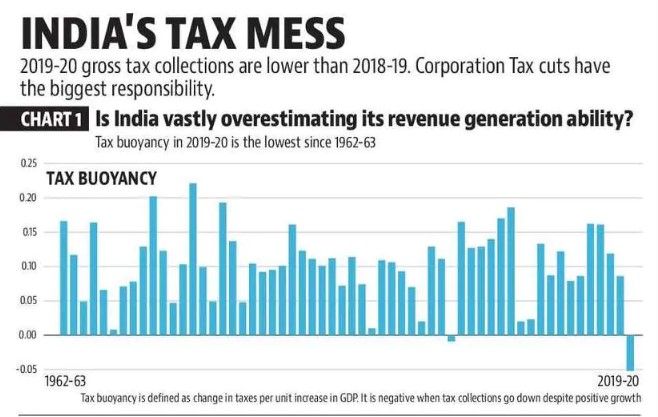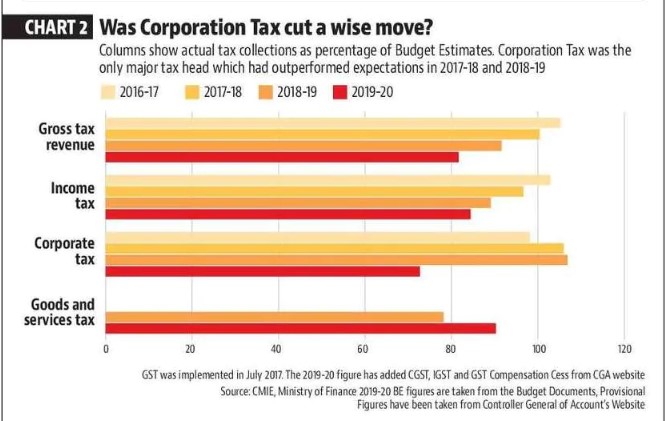Contents
- U.S. Will invite India and Russia as G7 postponed
- Supporter turned antagonist: Nepal PM
- SpaceX capsule delivers Nasa astronauts to ISS
- Corporate tax cut a bad gamble
- Other options to look at as RBI stops 7.75% bonds
U.S. WILL INVITE INDIA AND RUSSIA AS G7 POSTPONED
Focus: GS-II International Relations
Why in news?
U.S. President Donald Trump said on Saturday he would postpone the Group of Seven summit that he wanted to hold in late June and expand the list of countries invited to include Australia, Russia, South Korea and India.
Reason for Postponement
The U.S. President thinks G7 does not properly represent what’s going on in the world amidst the Pandemic.
The decision is a dramatic pivot for Mr. Trump, who had sought to host the group of major industrialized countries in Washington as a demonstration that the United States was returning to normal after the coronavirus epidemic.
Click Here to read more about G7 and Similar Groups
-Source: The Hindu
SUPPORTER TURNED ANTAGONIST: NEPAL PM
Focus: GS-II International Relations
Why in news?
With his decision to push through a Constitutional amendment to change Nepal’s official map to include parts of Indian territory that have been in dispute, Nepal Prime Minister K.P. Sharma Oli has rekindled worries of “nationalist politics” that translates in Nepal to an “anti-India” stance.
A Supporter in the Past
- In 1996 Mr. Oli split from his own party in order to support the Nepal-India agreement over the Mahakali river water sharing treaty.
- He cooperated with Indian authorities to pursue wanted criminals who had crossed over the open border between India and Nepal.
What Changed?
- The promulgation of the Nepali Constitution, one that India felt was unfair to Madhesis living in the south and unrepresentative of India’s interests in the country, seems to mark a drastic change in the relationship between India and Nepal.
- The blockade at the India-Nepal border resulted in supplies into landlocked Nepal being stopped for months. This adversely affected the India-Nepal relations.
- An eight-point transit and transport facilitation agreement Mr. Oli signed with Beijing in March 2016, that gave Nepal access to dry ports and rail links from China for the first time may have tilted Nepal towards a stronger relationship with China.
- The release of India’s new political map of Jammu and Kashmir, and Ladakh has been the latest flashpoint in the relations.
Oli Concerns
- For PM Oli, this anti-India stance based on nationalistic plank seems to be a legacy building exercise in the Nepali political landscape.
- The growing discord against Mr. Oli’s leadership within his own party has resulted in Mr. Oli taking a hard stance towards India in an effort to deflect attention from domestic affairs.
- Mr. Oli has been running an anti-India poll plank during recent elections.
‘Strategic autonomy’
- India has also hardened its position with Mr. Oli.
- Despite the agreement in 2014 over Foreign Secretaries meeting on the Kalapani and Susta disputes, no meeting on the disputes has been held in six years.
- The Nepal PM, wooed by the U.S. and China due to its strategic location, has been insisting on more strategic autonomy in the region and moving away from its traditionally strong relation with India.
Click Here to read more about the Kalapani Row
-Source: The Hindu
SPACEX CAPSULE DELIVERS NASA ASTRONAUTS TO ISS
Focus: GS-III Science and Technology, Prelims
Why in news?
SpaceX delivered two astronauts to the International Space Station for Nasa on 31st May, following up a historic liftoff with an equally smooth docking.
Significance
- It was the first time a privately built and owned spacecraft carried astronauts to the orbiting lab in its nearly 20 years.
- Nasa considers this the opening volley in a business revolution encircling Earth and eventually stretching to the moon and Mars.
- SpaceX’s Dragon capsule pulled up to the station and docked automatically, no assistance needed.
- The Dragon test pilots will join the one US and two Russian station residents in performing experiments and possibly spacewalks to install fresh station batteries.
-Source: Times of India
CORPORATE TAX CUT A BAD GAMBLE
Focus: GS-III Indian Economy
What leads up to Corporate Tax cuts?
- The Indian economy had been caught in a slowdown even before the pandemic hit. This made the case for a fiscal push even stronger.
- India’s revenue projection and collection abilities are facing an unprecedented crisis. Gross tax collections in 2019-20 were less than those in 2018-19.
- This is only the second instance since 1961-62 of tax collections having declined on a year- on-year basis.
- This is largely the result of what can be described as a bad gamble on corporation tax cuts to revive economic growth.
Tax Buoyancy Concerns
- These figures raise serious questions on the government’s tax buoyancy assumptions.
- Tax buoyancy is the additional revenue generated per unit increase in GDP.
- If tax collections went down when the economy was growing, they could suffer a huge fall when it is headed for a contraction.
- This also raises serious questions on assertions about decisions such as demonetisation and the Goods and Services Tax (GST) leading to a widening of the tax base.
Reduction in Collection of Tax

Provisional figures for 2019-20 put gross tax collections in 2019-20 at ₹20.09 lakh crore. This is lower than the ₹20.8 lakh crore collected in 2018-19.
The Centre for Monitoring Indian Economy (CMIE) database shows that it is only the second instance (after 2001-02) since 1961-62 that tax collection had fallen on a year-on-year basis.
What explains the fall in tax collections?
- The government announced a reduction in corporation tax rates in September last year.
- It slashed corporate tax rates for domestic manufacturers from 30% to 22%, while for new manufacturing companies; the rate was reduced from 25% to 15% provided they do not claim any exemptions.
- This was expected to lead to a revenue loss of ₹1.45 lakh crore.
- This was justified on the grounds that the move will revive the economy.
Did slashing Corporate Tax work?

- The gamble seems to have backfired badly. The revenue loss is bigger than expected. BE for corporate tax collection was ₹7.66 lakh crore in 2019-20.
- The provisional figures are just ₹5.56 lakh crore, a shortfall of ₹2.09 lakh crore.
- Gross fixed capital formation, which measures new investment activity, contracted 3.9% on a year on year basis in the quarter ending September 2019.
- It contracted at 5.2% and 6.5% in the quarters ending December 2019 and March 2020.
- The only major revenue head which had over performed vis-a-vis BE targets in both 2017-18 and 2018-19 was corporation tax, however, due to September’s tax cuts, this item had the biggest shortfall in 2019-20.
-Source: Hindustan Times
OTHER OPTIONS TO LOOK AT AS RBI STOPS 7.75% BONDS
Focus: GS-III Indian Economy
Why in news?
The Reserve Bank of India (RBI) released a notification last week announcing it was stopping the government of India 7.75% (taxable) bonds, known as the RBI 7.75% bonds.
Why were the7.75% bonds stopped?
- A surge in demand in this relatively high interest rate instrument due to rate cuts in other government savings products may have prompted the stoppage.
- The 7.75% bonds were a relatively costly way of government borrowing.
Various Other options for a fixed-income
Employees’ Provident Fund (EPF)
- EPF is the low-risk option for salaried individuals, that is currently offering among the highest returns in the fixed-income space.
- EPF matures at age 58 and is open only to organized sector employees and entails a 12% deduction of your basic salary plus dearness allowance matched by a 12% contribution by the employer.
- The interest rate on EPF is linked to the performance of the investments and it is declared by the EPF Organization (EPFO) every year.
- This interest is tax-free.
Click Here to Read more about EPF and EPFO
Public Provident Fund (PPF)
- Public Provident Fund (PPF) is a tax-exempt product for non-sa;aroed individuals (on contribution, interest rate earned and withdrawal giving it the exempt-exempt-exempt or EEE status).
- It is among products that give the highest interest rate at 7.1% per annum.
- However, you can only invest up to ₹1.5 lakh per year in PPF.
Sukanya Samriddhi Yojana
- Sukanya Samriddhi Yojana currently offers an interest rate of 7.6% per annum and can be invested in if one has up to 2 girl children.
- This is an account that can be opened by the parents of a girl child under the age of 10.
- It has a tenor of 21 years and an investment limit of ₹1.5 lakh per annum.
- Contributions to it and the interest rate it pays are tax-free.
National Savings Certificates (NSCs) and Kisan Vikas Patras (KVPs)
- These do not have investment limits.
- They are issued by the government and can be purchased from banks and post offices.
- Currently, NSCs pay an interest rate of 6.8% per annum and have a five-year tenor.
- In NSCs, both the principal amount and interest earned are eligible for tax deduction.
- KVPs have an interest rate of 6.9% and a tenor of 10 years and four months.
- Interest earned in KVP is taxable at your slab rate.
Term deposits
- post office FDs are part of India’s small savings universe and are fully backed by the government.
- They are offered in maturities of one, two, three and five years at rates ranging from 5.5% for one year to 6.7% for five years.
- The interest earned on term deposits is taxable at your slab rates.
-Source: Livemint



